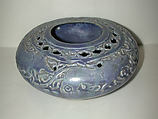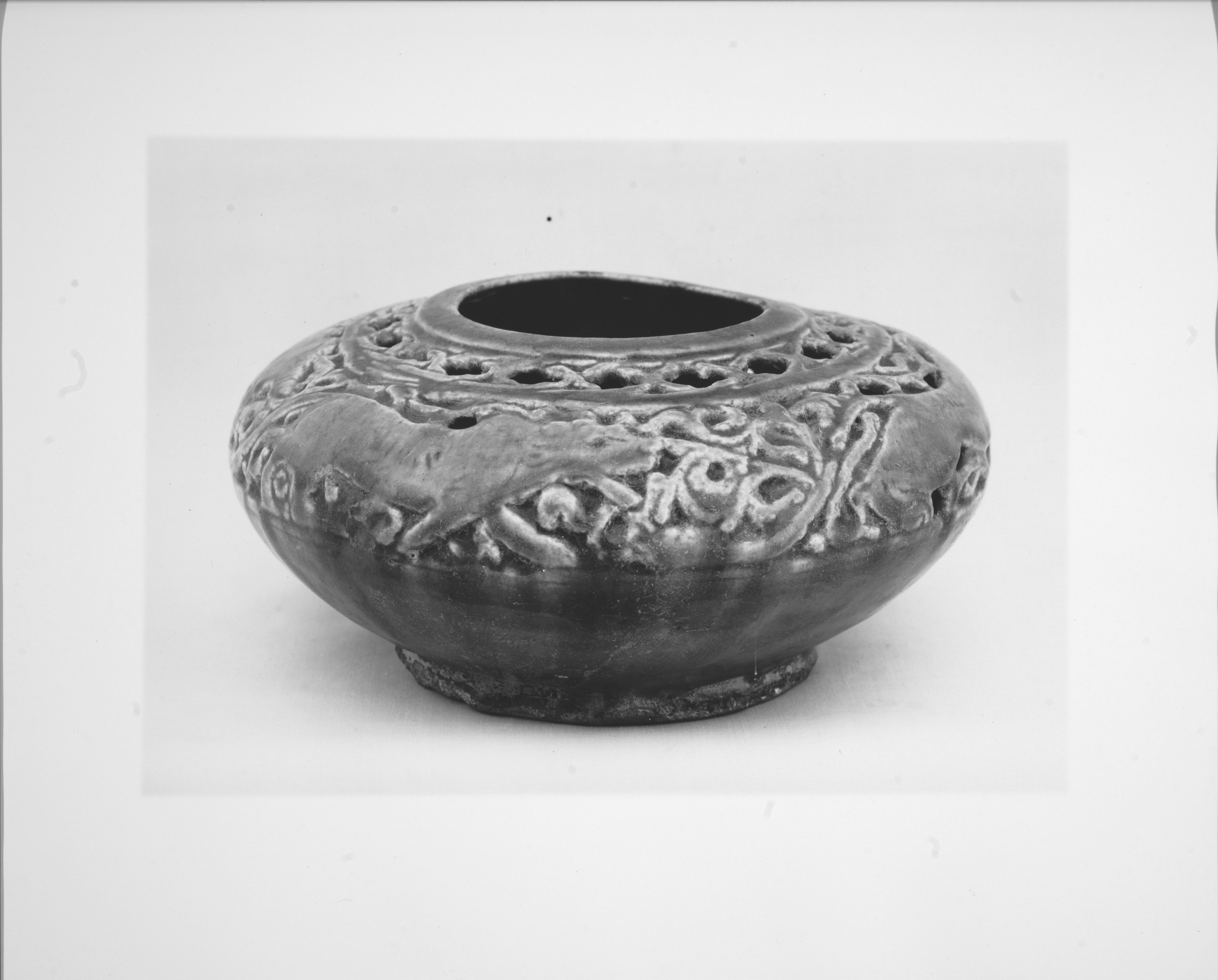Pierced Blue Pot with Animals and Vegetal Scroll
Archaeological evidence reveals that carved and pierced vessels with a monochrome glaze are among the earliest stonepaste wares produced in Iran. They were produced already in the last quarter of the 11th century, in a range of new shapes and forms. Some of them, like lobed bowls, animal-shaped spouts and jug-like ewers, became common forms used for luster and mina’i objects; others, like this sub-globular vessel, were used distinctively for monochrome wares.
Before being glazed in blue, the object was carved. It features a main band of walking quadrupeds in sequence, such as a dog, a feline, a boar (?), and a fox (?). These creatures were associated with the hunt, one of the chief royal pastimes in both Iranian and Central Asian territories.
Due to rights restrictions, this image cannot be enlarged, viewed at full screen, or downloaded.
This artwork is meant to be viewed from right to left. Scroll left to view more.



